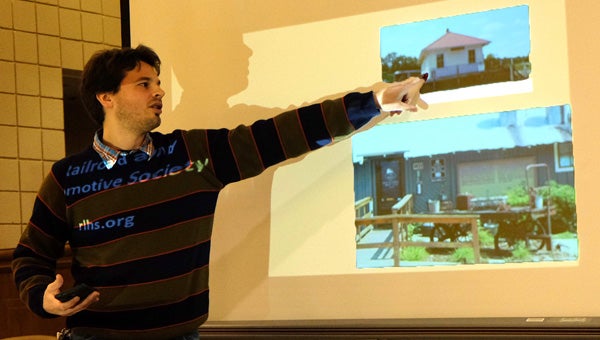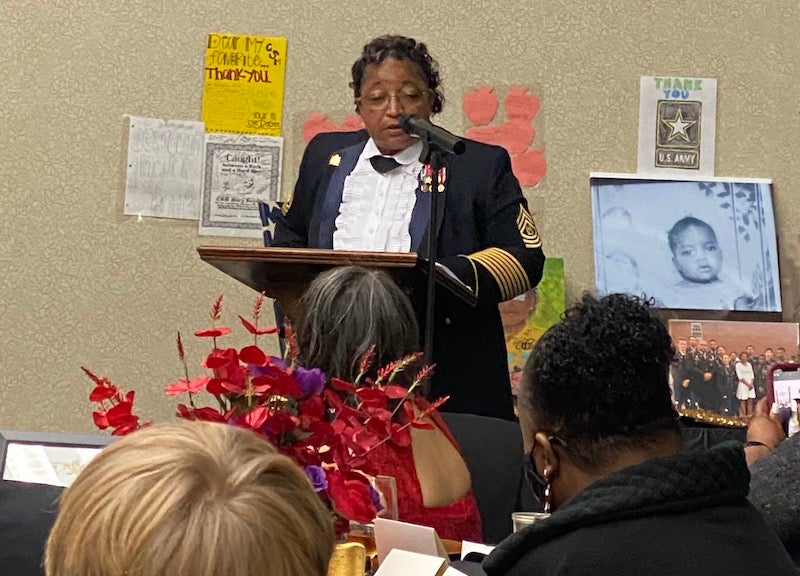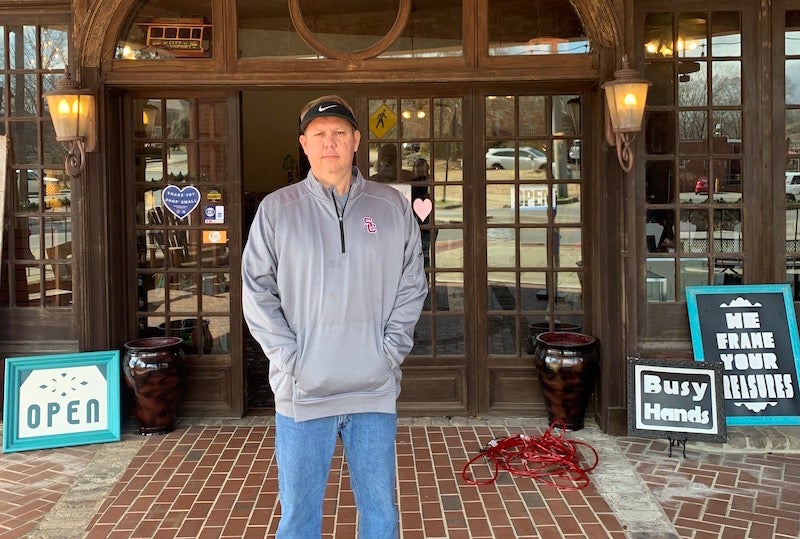Boody speaks on mining history
Published 9:55 am Wednesday, February 3, 2016

Mike Boody shared old photographs, mining history and his work at Red Mountain Park recently at Helena City Hall. (Contributed)
By LAURA BROOKHART / Community Columnist
Helena’s mining history is well-documented at the Penhale History Museum and long been of interest to our Historical Committee, so when member Linda Wurstner learned of the efforts to reclaim miles of scenic multi-use trails at Red Mountain Park near I-65 and Oxmoor Road, she invited Mike Boody, Red Mountain Park education specialist, to give a presentation about work ongoing at RMP since 2012.
Offered now is the Adventure Guide, field trips for children, the Car Shop and the Red Ore Zip Tour and a weekly guided tour by Boody.
“At Grace’s Gap the highest point in the park, you can see the progress over time,” said Boody.
“One can also observe the ‘GoatBusters’ that have been brought onsite to eat the kudzu and other weeds over the 40 acres.”
Grace’s Gap is named in honor of Baylis Earle Grace, who first brought the iron ore down from Red Mountain and processed it into iron bars. Grace, a Renaissance man of sorts, served as Birmingham sheriff, tax assessor and editor of the Central Alabamian, an early Jefferson County newspaper.
The RMP Eureka Mine began iron ore operation in 1863. Of the same name as Helena’s Eureka No. 4 that was uncovered prior to HHS being built, Ken Penhale pointed out that Helena’s Eureka mined coke.
When hiking at Red Mountain Park you can observe three types of mining operations that took place between 1820 and the 1970s—strip mining, drift mining and slope mining.
The slope mine portals, now stopped up, went thousands of feet into the earth at about a 30-degree slope. The portals are numbered and dated based on when the portal was installed.
Boody noted that none of the mines may be entered, which is disappointment to some.
The signature structure at RMP is Mine No. 13—in operation from 1873 to 1933. One can also see the hoist house, the boiler house of Mine No. 10 and the bathhouse of Mine No. 14.
Of interest, also, are the now available audio recordings of former mine workers. Daily hours at Red Mountain Park are 7 a.m. to 5 p.m. and 7 a.m. to 7 p.m. beginning March 22.








